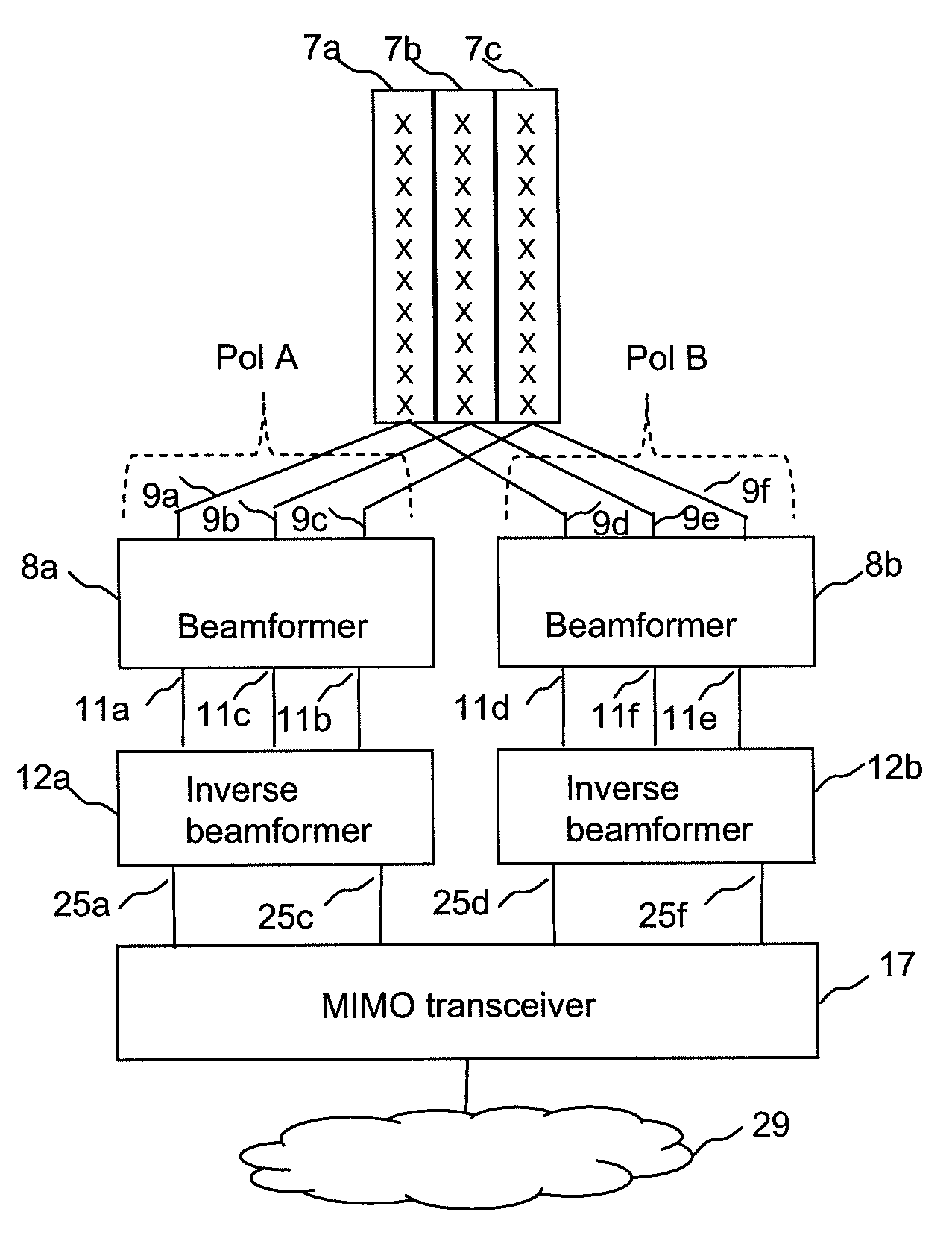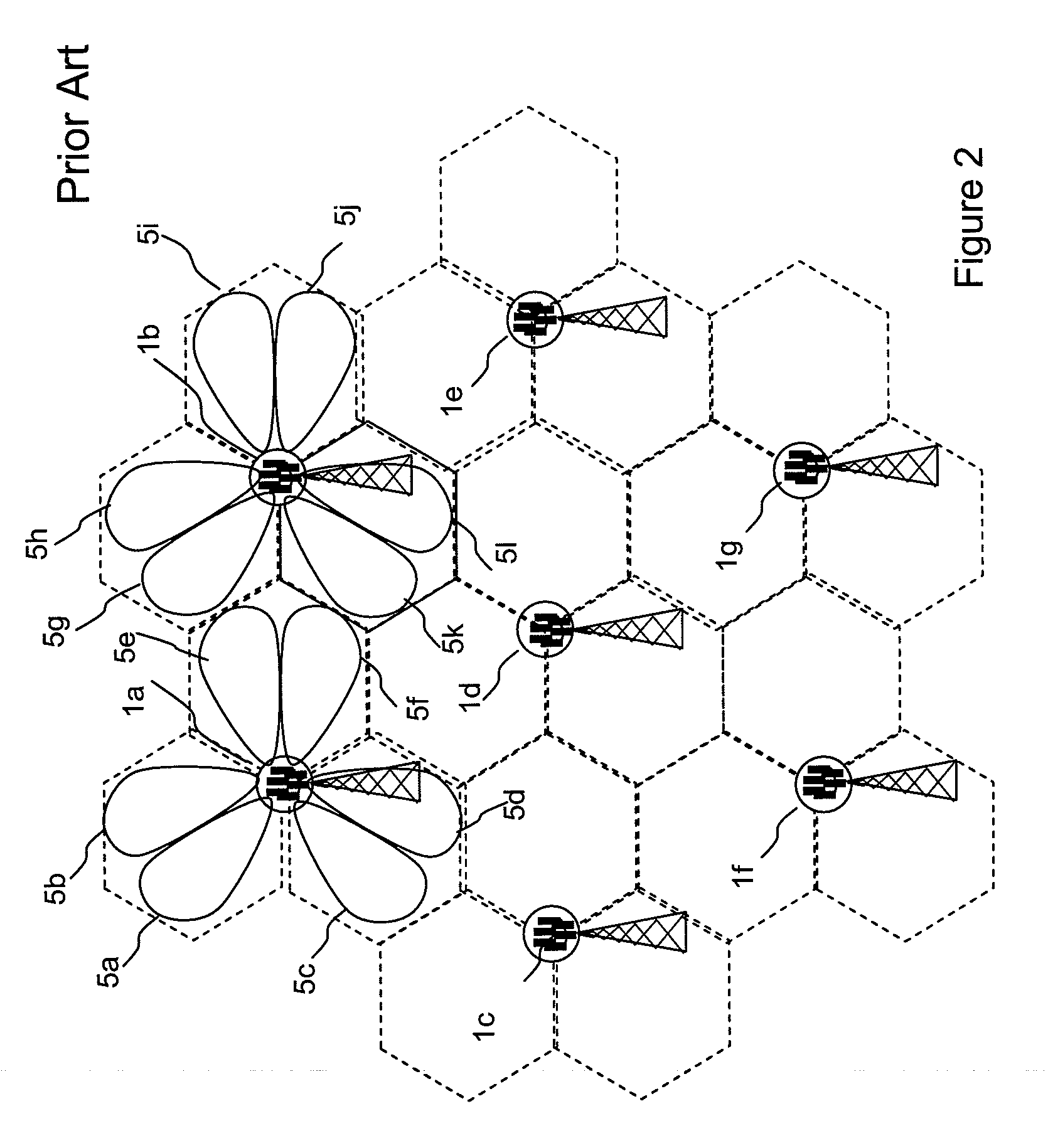Antenna system
a beamformer and antenna technology, applied in the direction of antennas, antenna details, electrical equipment, etc., can solve the problems of destructive combination of signals from other antenna elements than the first antenna element providing input to the beamformer at the connecting port, and achieve the reduction the maximisation of the magnitude of the resultant signal, and the reduction of the loss of signal between the antenna element and the connecting point
- Summary
- Abstract
- Description
- Claims
- Application Information
AI Technical Summary
Benefits of technology
Problems solved by technology
Method used
Image
Examples
Embodiment Construction
[0054]In general, the present invention is directed to methods and apparatus that enhance the capacity of wireless communications between a base station and remote stations. The invention will be described in the context of a cellular wireless system, but it is to be understood that this example is chosen for illustration only and that other applications of the invention are possible.
[0055]FIG. 5 illustrates a first embodiment of the invention, which relates to a beamformer that produces two beams from a three element antenna array. Three antenna elements 7a, 7b and 7c, which may be typically vertical columns of antenna elements, are connected to beamformer 8, which may typically be integrated with the antenna elements and may be within the same enclosure. In a one deployment, the antenna elements 7a, 7b, and 7c and beamformer 8 will be sited on a tower at a cellular radio cell site. Three such integrated units would be deployed at a cell site, so that each may give coverage to an a...
PUM
 Login to View More
Login to View More Abstract
Description
Claims
Application Information
 Login to View More
Login to View More - R&D
- Intellectual Property
- Life Sciences
- Materials
- Tech Scout
- Unparalleled Data Quality
- Higher Quality Content
- 60% Fewer Hallucinations
Browse by: Latest US Patents, China's latest patents, Technical Efficacy Thesaurus, Application Domain, Technology Topic, Popular Technical Reports.
© 2025 PatSnap. All rights reserved.Legal|Privacy policy|Modern Slavery Act Transparency Statement|Sitemap|About US| Contact US: help@patsnap.com



